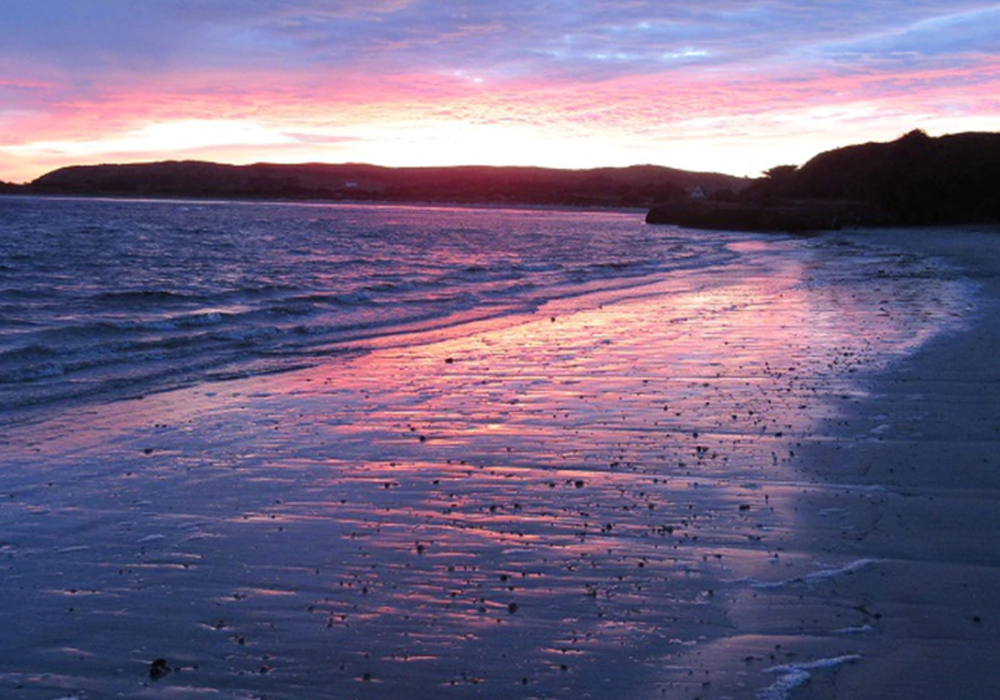
You might also like:
Helen van Berkel discovers the windswept treasures of our islands off to the side
The Chatham Islands have had their fair share of ups and downs: at least three since a few billion years BC.
The last time this collection of about 10 isolated islands rose from the sea was about three million years ago. Don’t worry: they are on their way up now, rising at the rate of a metre every 1000 years. And you don’t feel a thing.
All this geologic to-ing and fro-ing from the seabed has created a stunning landscape of peat flatlands, rocky cliffs and stone escarpments eroded into fantastic shapes. Naturally fertile, brilliant green fields are dotted with sheep and cattle. From the air, the main island, Chatham, looks like either a nut-brown hare with its ears bent forward or a pizza dough that has been stretched too far, creating a lacy landscape of pitted lakes and a lagoon bigger than Rarotonga.
The volcanic activity has happened at the bottom of the sea, creating weird formations such as “splatter rock”, a column of curly lava that oozed out of the Earth, like icing from a nozzle, and toppled, leaving a curious petal-like pillar on the sand at Wharekauri. This beach in the island’s north is littered with whale skulls and vertebra, the sad remains of a pod of pilot whales who had a seriously down day back in 2009.

A little further west, golden pillow lava and black basalt columns stand sentinel. Forget Ireland’s Giant’s Causeway: the Chathams has the basalt columns. You will just about have this marvel to yourself — geometrically perfect, hexagonal columns naturally created as hot lava reacted with colder waters.
The Chathams are on the way up in more way than one. Like the rest of New Zealand, the islands are enjoying a tourism boom as full flights bring people to fill the island’s beds. A $60m wharf under construction near the “CBD” of Waitangi is only likely to increase that.
Due for completion late next year, the wharf will cater to the island’s fishing fleet, livestock exports and may even allow the odd cruise ship to berth. It will also allow more regular and reliable docking of the supply ship that brings in most of the islanders’ needs.
That nearly everything you eat and drink has to be brought in by ship or by air is a bit of a downside for the Chathams. Most of what is on your plate at night would cost about 80 per cent more than it does on the mainland.
On the positive side, the Hotel Chatham’s chefs are geniuses. Dazzling dinners such as octopus ceviche, roast lamb, crayfish pasta, blue cod fillets and chips poured out of the kitchen during my stay.
Near Kaingaroa is a moonscape of flaky schist where seals heave and ooze inelegantly about on the rocks, diving and frolicking in the tidal pools, safe from the sharp teeth of ocean predators. Those predators probably drove ashore the 2m elephant seal that beached itself about an hour’s walk from our hotel in Waitangi. It turned a lazy head in our direction when we wandered up to greet him. We weren’t taking any chances with the elephant seal’s legendary speed, and kept a respectful distance, heading instead into the bush.
Chatham has lost most of its native bush to earlier settlers’ fuel needs, to farmers and to general human interference but a number of local landowners are determined to encourage regeneration. The Nikau Walk meanders through a stand of bush planted only 30 years ago but already rich in biodiversity and mature stands of, you’ll be surprised to learn, nikau.
Dotted around the island are akeake trees blown almost flat by the unrelenting breezes. On scattered landholdings farmers have replanted; tui and kereru flit and warble in large valleys of native trees. But the plant that draws most green-thumbed visitors is the Chatham Islands forget-me-not. This hardy little flower nestles in a luxurious bed of large, lush bright green leaves.

The islands are one of the last areas to proceed through the Waitangi Treaty settlements, a process complicated by the involvement of Moriori, who were here before the arrival of tribes from Taranaki. The peaceful Moriori were no match for their warlike visitors; before long many had been slaughtered.
The last full-blooded Moriori, Tommy Solomon, is honoured in a statue at Owenga Point. Moriori petroglyphs still adorn a limestone cliff on the edge of Te Whanga lagoon and protected trees.
Your day on Chatham Island will likely bring four seasons, so expect blazing sunshine to turn to freezing rain in minutes. And expect an itinerary that changes by the day: a day trip to Pitt Island for half of our group turned into a two-day epic with no clean underwear after the plane broke down.
Although you can travel to the islands independently, joining a tour group ensures your transport and access to the sights is already organised. Our guide was local hotelier Toni Croon, a jaunty born-and-bred islander who was overflowing with island gossip and history.
Sоurсе: nzherald.co.nz



